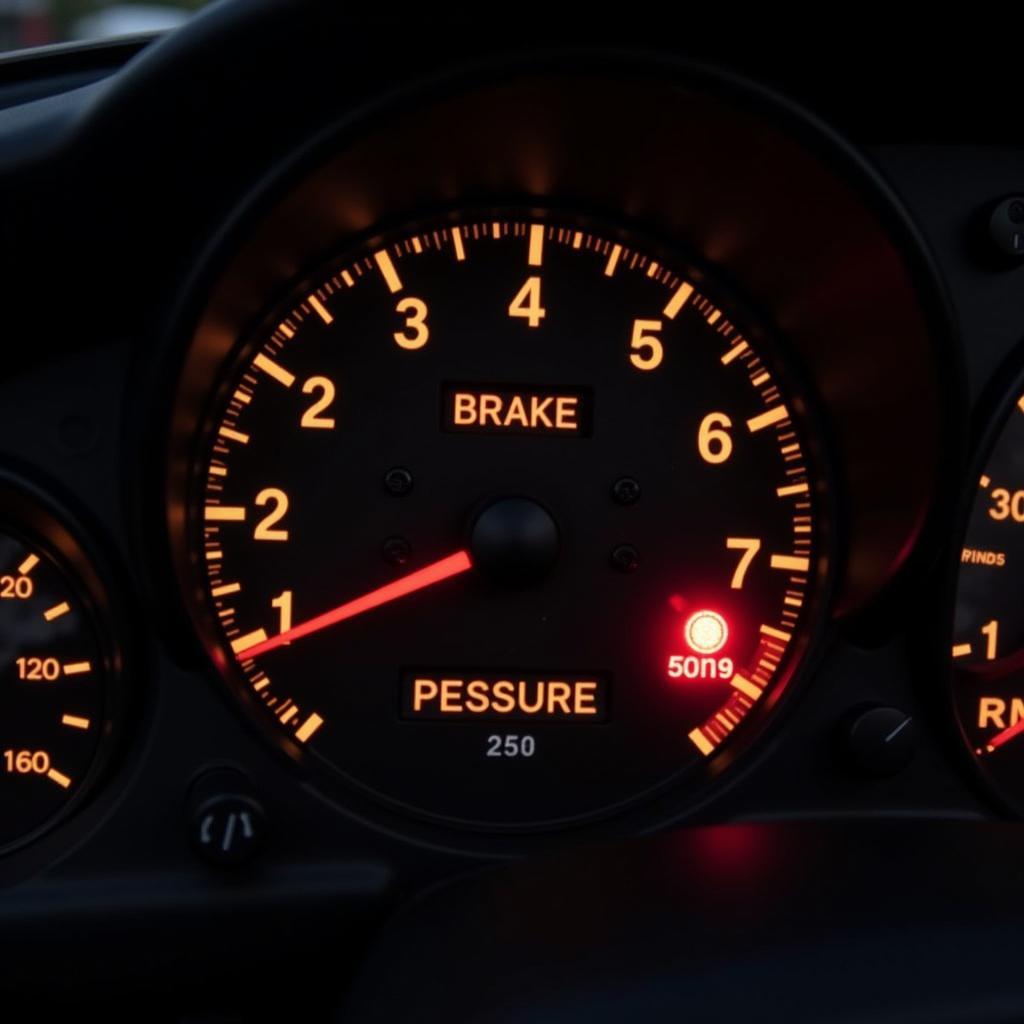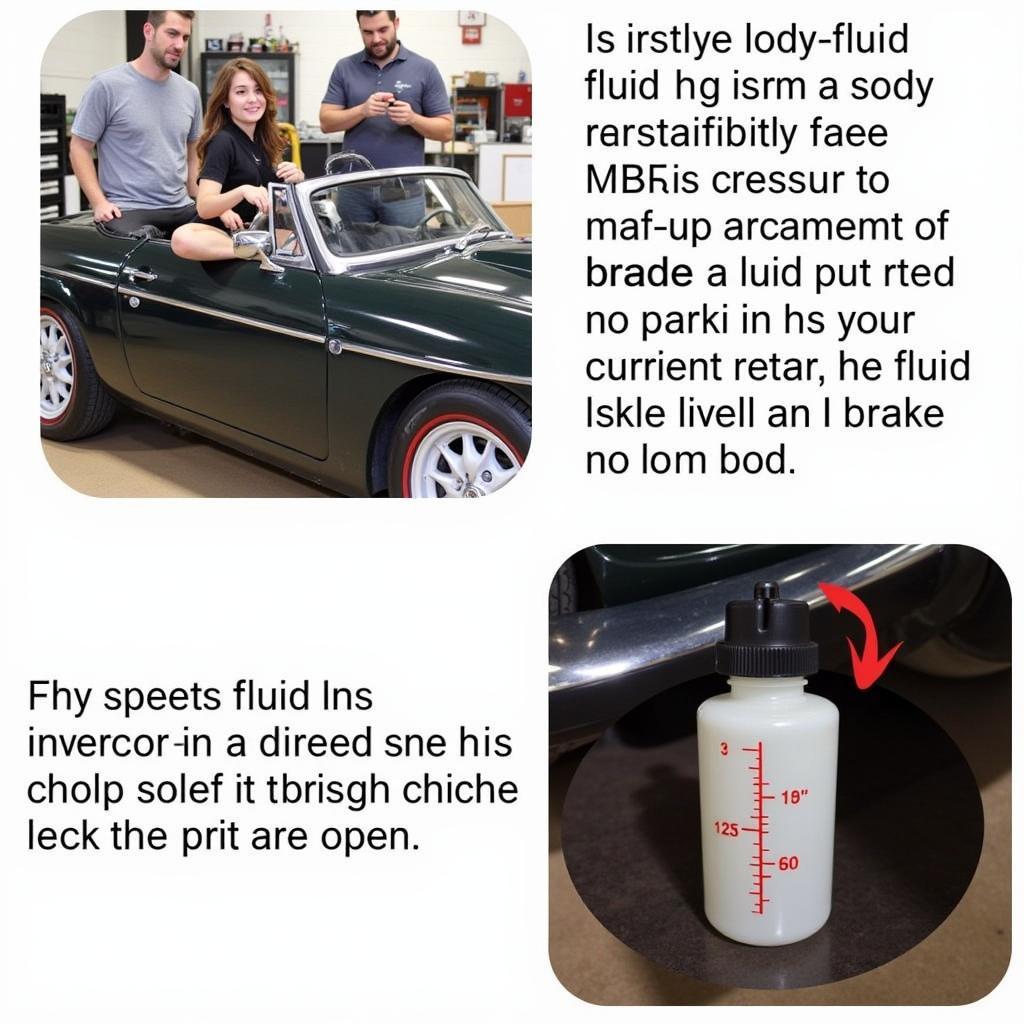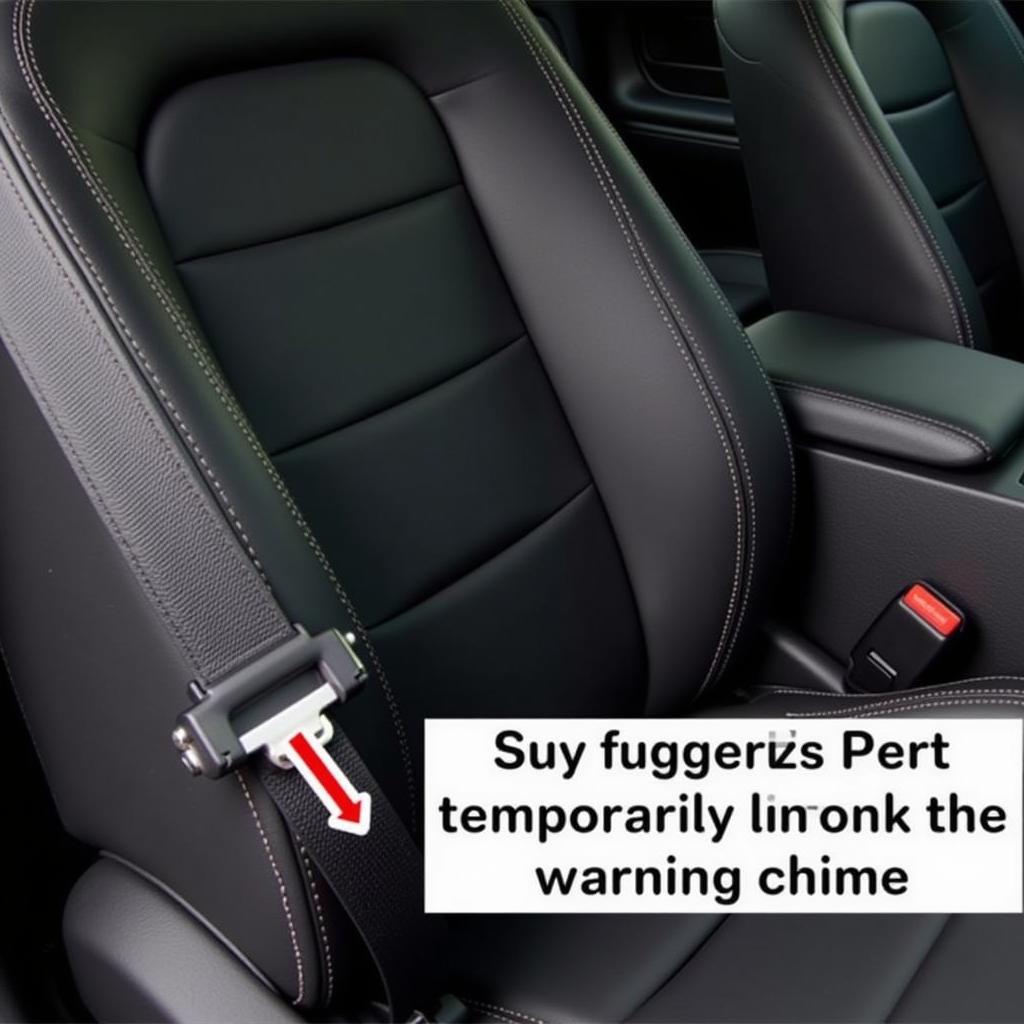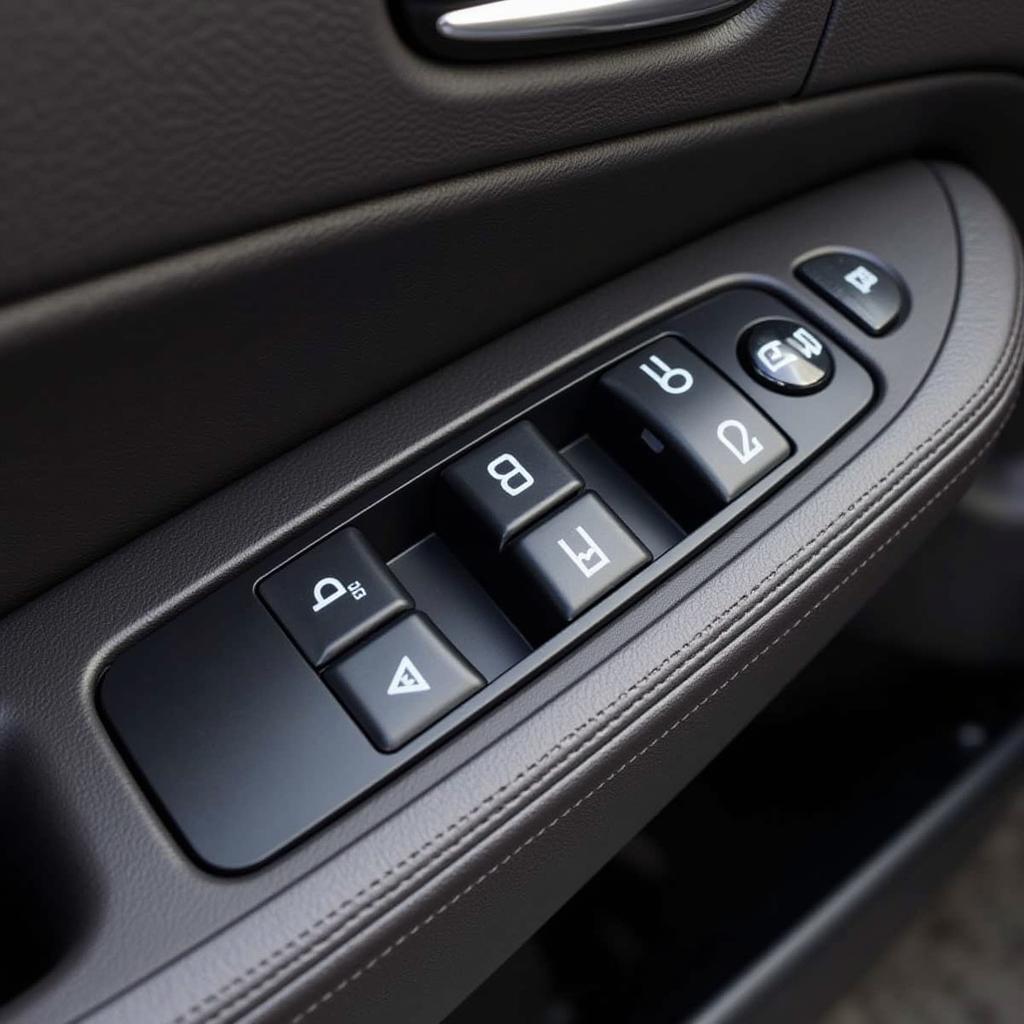The brake pressure warning switch is a crucial safety component in your MGB. It monitors the hydraulic pressure within your braking system and triggers a warning light on your dashboard if it detects an imbalance or drop in pressure. While the illumination of this light doesn’t necessarily mean imminent brake failure, it’s a serious warning sign that should never be ignored.
 MGB brake pressure warning light on dashboard
MGB brake pressure warning light on dashboard
Understanding the MGB Brake Pressure Warning Switch
The MGB brake pressure warning switch is typically located on the internal hydraulic junction within the braking system. It’s designed to activate in two main scenarios: when the hydraulic pressure drops significantly, which could indicate a leak in the system, and when there’s an imbalance in pressure between the front and rear brake circuits. This pressure differential switch function is crucial for alerting you to potential issues that could compromise braking performance.
Common Causes of a Triggered Warning Light
Several factors can trigger the brake pressure warning light in your MGB. Here are some of the most common culprits:
- Low brake fluid: This is the most common reason for the warning light. A leak in the system or worn-out brake pads can lead to low fluid levels.
- Faulty brake pressure warning switch: Like any electrical component, the switch itself can fail.
- Worn-out brake components: Worn brake hoses, lines, calipers, or wheel cylinders can also cause pressure loss and trigger the warning light.
- Air in the brake lines: Air can enter the brake lines during repairs or if the brake fluid reservoir runs dry.
Troubleshooting the Issue
Before assuming the worst, there are a few checks you can perform yourself:
- Check brake fluid level: This is the easiest and most obvious check. If the fluid level is low, top it up to the recommended level with the correct type of brake fluid specified for your MGB.
- Inspect for leaks: Carefully examine all the brake lines, hoses, and connections for any signs of leaks. Look for wet spots or drips. Pay attention to areas around the master cylinder, wheel cylinders, and calipers.
- Check the switch connection: Ensure the electrical connector to the brake pressure warning switch is secure and free from corrosion.
 Checking the brake fluid level in an MGB
Checking the brake fluid level in an MGB
When to Seek Professional Help
If the brake warning light remains illuminated after checking the brake fluid and inspecting for visible leaks, it’s highly recommended to seek professional assistance. Diagnosing a mgb brake warning light switch issue often requires specialized knowledge and tools.
“Ignoring a brake warning light is like playing Russian roulette with your safety,” says John Smith, a seasoned automotive electrician with over 20 years of experience specializing in British car marques. “It’s always best to err on the side of caution when it comes to brakes.”
Remote Diagnostics and Software Solutions
In today’s technologically advanced world, remote diagnostics and software solutions can be valuable tools for addressing automotive issues, including those related to the mgb brake warning light switch. By connecting your MGB to a specialized diagnostic interface, trained technicians can remotely analyze your vehicle’s electronic control units (ECUs) to identify fault codes and pinpoint potential issues with the brake pressure warning switch or other related components.
Conclusion
The brake pressure warning switch in your MGB plays a vital role in ensuring your safety on the road. While a simple low fluid level is often the culprit behind a triggered warning light, it’s crucial not to ignore this warning. Regular checks, timely maintenance, and seeking professional help when needed can go a long way in preventing costly repairs and ensuring a safe and enjoyable driving experience.


